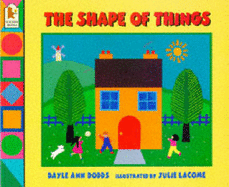Mr. Carpenters 5th Grade Class Website

Welcome to the Geometry Children’s Literature page. Below are lists of books that can be used to help you further understand the use of Geometry. Along with each book is an example of an activity that can be done to go along with the topic.
Childrens Literature

1. Up, Down, and Around.
a. Author: Ayers, Katherine.
b. Illustrator: Nadine Bernard Westcott
c. Description: The text of this book describes plants that grow in a specific direction; for instance carrots that grow downward, corn the grows upwards, and tomato vines that grow all around. Engaging pictures in this book help students examine directions and spaces of items. This book is a great tool to introduce students to the idea of direction. An activity that can be done in the home can be taking a plant, of your choice, and having a child examine the direction this plant is growing in; examing its growth over a period of time.

2. Round is a Pancake.
a. Author: Baranski, Sullivan Joan.
b. Illustrator: Han, Yu-Mei.
c. Description: This book is filled with wonderful illustrations that catches the students eye, as they read through rhyming verses that name objects that are round. At the end of this book are pages full of complex imahes that challenges the reader to find round objects in the backgroud. This book can be used to show students the properties of round objects, and challenge them to round objects throughout the school, or home environment.

3. The Shape of Things
a. Author: Dodds, Dayle Ann.
b. Illustrator: Lacome, Julie.
c. Description: This book uses rhyming text to introduce a flat object to the reader. As the text continues, the flat object is transformed into a familiar item, such as a square to a house. The children will be exposed to various shapes that make up common objects that they experience in their daily living. Students can apply what they learn from this book, to explore how items in their real-world setting, are made up of shapes from this book.
4. Changes, Changes.
a. Author: Hutchins, Pat.
b. Description: This book is empty of words. The two characters of this story arrange a set of colored blocks to create different shapes and objects. As they continue to rearrange the same set of blocks, the reader can see how many shapes can be combined to make all new shapes. As the reader progresses through the book, they begin to form their own story, as they exampine the picture. Shape pieces can be used with a child to have them arrange said pieces to make new shapes. The child can be challenged to create a picture with the pieces provided to them.\

5. Finding Shapes: Rectangles.
a. Author: Leake, Diyan.
b. Description: In this book geometry terms are used to describe rectangular figures. The reader is challenged to find rectangular shapes in a picture of common objects. This book is part of a set of four books featuring triangles, circles, and squares. Any of these books can be used to have students practice recognizing shapes. Students can then be asked to find shapes in their everyday environment, such as the classroom, or at home. Students should write down their finding, to compare objects and their individual properties.

